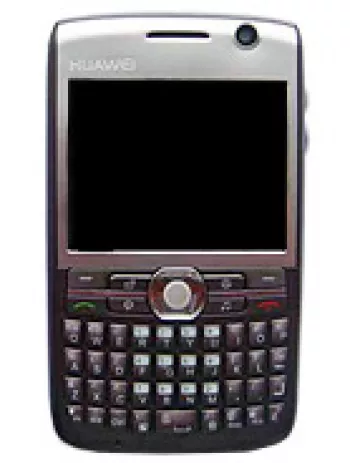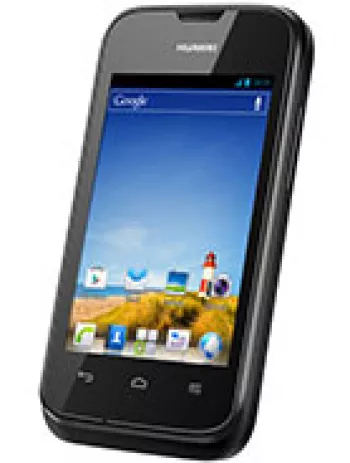
Overview of Huawei Ascend Y100
The Huawei Ascend Y100 was launched in May 2012, marking an entry-level offering in Huawei's smartphone lineup of that time. Discontinued now, the device aimed at providing basic smartphone functionalities with the affordability of a budget phone. Despite its modest specifications, it held its ground in the market by catering to users looking for a simple, no-frills mobile device.
Design and Build
With dimensions of 106.5 x 56 x 10.9 mm and weighing only 100 grams, the Huawei Ascend Y100 was compact and lightweight, making it easily portable and comfortable to handle. The use of Mini-SIM was typical for the era. The device featured a simple plastic body, typical of budget phones released during that period, available in black and white finishes, thus keeping it understated in appearance.
Display
The device came with a 2.8-inch TFT display capable of displaying 256K colors, a conservative feature by today's standards but adequate at the time of release. It had a resolution of 240 x 320 pixels, and while this translates to a pixel density of approximately 143 ppi, it provided moderately clear visuals sufficient for everyday tasks.
Platform and Performance
Running on Android 2.3 (Gingerbread), the Ascend Y100 featured the Qualcomm MSM7225A Snapdragon S1 chipset. Its 800 MHz Cortex-A5 CPU and Adreno 200 GPU were basic, aimed at delivering necessary performance for light tasks and app usage. These specifications allowed it to handle the basic functionality expected from an entry-level Android device at the time, although multitasking and running heavy apps were limited due to hardware constraints.
Memory and Storage
The phone was equipped with 256MB of RAM and 512MB of internal storage, which was minimal and restricted the amount of data and applications its users could store. However, it included a microSDHC card slot allowing for expanded storage, which somewhat alleviated storage limitations. Users often used the expansion option to increase the media storage capacity, thus enhancing the utility of the phone.
Camera
Featuring a single 3.15 MP rear camera, the Ascend Y100 was not designed for high-quality photography. The camera could record video at 480p@30fps, which was decent for basic video captures given its market segment. The absence of a front-facing camera highlights its basic design focus, aiming more on functionality over advanced features.
Audio and Connectivity
The device supported Wi-Fi 802.11 b/g/n, Bluetooth 2.1 with A2DP, and had GPS and A-GPS for basic navigation. Optional NFC capabilities were available, which was a somewhat premium feature at the time. FM radio was included, allowing users to listen to their favorite stations. The phone also had a 3.5mm headphone jack, a convenient feature for personal audio use.
Battery Life
Powered by a removable Li-Ion 1050 mAh battery, the Ascend Y100 provided moderate usage time, with a stand-by time of up to 514 hours and talk time of up to 5 hours and 15 minutes on 3G. Despite its modest capacity, the battery was considered average for entry-level smartphones of that era.
Sensors and Additional Features
The phone included basic sensors like an accelerometer, proximity sensor, and compass, enabling it to handle simple applications and tasks that required sensor input. Given its entry-level positioning, the Huawei Ascend Y100 didn't boast an array of high-end features but was equipped well enough to deliver essential smartphone experiences.
Market Positioning and Legacy
Available at about 70 EUR, the Huawei Ascend Y100 was primarily aimed at consumers seeking affordable Android smartphones with basic functionalities. It served as an introduction for users transitioning from feature phones to smartphones. While it is no longer in the market, its inception played a part in making smartphones more accessible to a broader audience, paving the way for more advancements in Huawei's smartphone lineup.
Key Features of Huawei Ascend Y100
- Compact and lightweight design at 100 g (3.53 oz)
- 3G capabilities with HSPA 7.2/5.76 Mbps speed
- 2.8-inch TFT display with 256K colors
- Powered by Android 2.3 (Gingerbread) operating system
- Qualcomm MSM7225A Snapdragon S1 chipset with 800 MHz Cortex-A5 CPU
- Expandable storage via microSDHC (dedicated slot)
- 3.15 MP main camera with 480p video recording
- Supports Wi-Fi, Bluetooth 2.1, and GPS with A-GPS support
- FM radio with optional NFC support
- Removable 1050 mAh battery offering up to 514 hours standby time (3G)
- Available in Black and White color options
Disadvantages of Huawei Ascend Y100
- Low screen resolution at 240 x 320 pixels, resulting in ~143 ppi density.
- Small display size of 2.8 inches.
- Limited internal storage of 512MB and 256MB RAM, which may affect performance.
- Runs on the outdated Android 2.3 (Gingerbread) operating system.
- Low processor speed at 800 MHz Cortex-A5, affecting overall performance.
- Single 3.15 MP main camera without advanced features.
- No front-facing camera (selfie camera).
- Limited video recording capabilities at 480p@30fps.
- Battery capacity is relatively low at 1050 mAh, affecting longevity.
- NFC is optional and not available by default.

View Also
More Phones
All Rights Reserved +14268 Phones © Mobilawy 2025

























